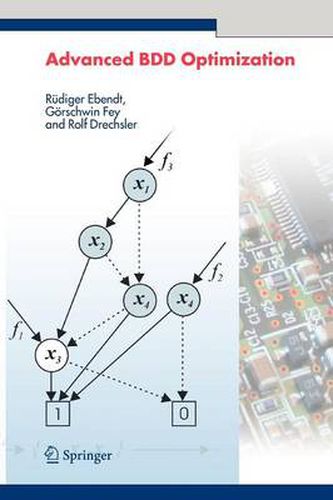Readings Newsletter
Become a Readings Member to make your shopping experience even easier.
Sign in or sign up for free!
You’re not far away from qualifying for FREE standard shipping within Australia
You’ve qualified for FREE standard shipping within Australia
The cart is loading…






This title is printed to order. This book may have been self-published. If so, we cannot guarantee the quality of the content. In the main most books will have gone through the editing process however some may not. We therefore suggest that you be aware of this before ordering this book. If in doubt check either the author or publisher’s details as we are unable to accept any returns unless they are faulty. Please contact us if you have any questions.
The size of technically producible integrated circuits increases continuously. But the ability to design and verify these circuits does not keep up with this development. Therefore today’s design flow has to be improved to achieve a higher productivity. In Robustness and Usability in Modern Design Flows the current design methodology and verification methodology are analyzed, a number of deficiencies are identified and solutions suggested. Improvements in the methodology as well as in the underlying algorithms are proposed. An in-depth presentation of preliminary concepts makes the book self-contained. Based on this foundation major design problems are targeted. In particular, a complete tool flow for Synthesis for Testability of SystemC descriptions is presented. The resulting circuits are completely testable and test pattern generation in polynomial time is possible. Verification issues are covered in even more detail. A whole new paradigm for formal design verification is suggested. This is based upon design understanding, the automatic generation of properties and powerful tool support for debugging failures. All these new techniques are empirically evaluated and experimental results are provided. As a result, an enhanced design flow is created that provides more automation (i.e. better usability) and reduces the probability of introducing conceptual errors (i.e. higher robustness).
$9.00 standard shipping within Australia
FREE standard shipping within Australia for orders over $100.00
Express & International shipping calculated at checkout
This title is printed to order. This book may have been self-published. If so, we cannot guarantee the quality of the content. In the main most books will have gone through the editing process however some may not. We therefore suggest that you be aware of this before ordering this book. If in doubt check either the author or publisher’s details as we are unable to accept any returns unless they are faulty. Please contact us if you have any questions.
The size of technically producible integrated circuits increases continuously. But the ability to design and verify these circuits does not keep up with this development. Therefore today’s design flow has to be improved to achieve a higher productivity. In Robustness and Usability in Modern Design Flows the current design methodology and verification methodology are analyzed, a number of deficiencies are identified and solutions suggested. Improvements in the methodology as well as in the underlying algorithms are proposed. An in-depth presentation of preliminary concepts makes the book self-contained. Based on this foundation major design problems are targeted. In particular, a complete tool flow for Synthesis for Testability of SystemC descriptions is presented. The resulting circuits are completely testable and test pattern generation in polynomial time is possible. Verification issues are covered in even more detail. A whole new paradigm for formal design verification is suggested. This is based upon design understanding, the automatic generation of properties and powerful tool support for debugging failures. All these new techniques are empirically evaluated and experimental results are provided. As a result, an enhanced design flow is created that provides more automation (i.e. better usability) and reduces the probability of introducing conceptual errors (i.e. higher robustness).